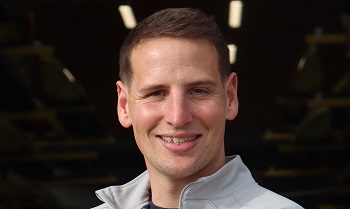27 May 2024
As part of the 2024 AIS Concussion and Brain Health Position Statement, specific resources have been designed to help coaches and support staff recognise the symptoms of concussion and understand the best process for treatment and ongoing management of concussion. This is Para-rowing coach James Loveday’s experience with concussion in sport.
As a coach, it is part of the job to recognise when an athlete is not at their peak and as Australia’s Paralympic Rowing Coach James Loveday experienced, it is these observations that can be crucial in picking up signs of concussion.
When asked about his experience dealing with concussion in athletes, Loveday recalled a time he noticed symptoms in a young athlete who turned up for training after being in a car accident.
“He was a little bit dazed initially and we had a conversation about whether he should be training that day, but what was really noticeable was, as the week progressed is he was really struggling with the day-to-day element of training,” Loveday said.
In particular, the athlete was struggling with being out in the sun and his cognitive thinking skills appeared “slower than usual,” according to Loveday.
“He was getting physiotherapy at the time for some whiplash because somebody driven into the back of them, so he’d hit his head backwards... it was only at the point that we explored the idea that it was probably a concussion that was extending out.”

As a coach, Loveday says he sees athletes at their best and at their worst which is why he was able to quickly identify that something was wrong.
“It was really, really obvious with this individual - really charismatic athlete who for the space of about ten days was just quiet, wasn't really engaging with people, didn't want to be in the crew area where there was noise was suddenly going up and sleeping on a regular basis between sessions, just a complete change in behaviour,” Loveday said.
Once it was established that it was a concussion, the team immediately shifted towards a different set of protocols to manage it.
“As soon as it was very obvious what it was, it essentially ended up being just a really gradual return to training,” Loveday said, noting that they removed intensity from the program and spoke to the athlete's school about reducing screen time for up to ten days until he was well enough to resume things as normal.
Speaking with hindsight, Loveday says if he were to face another case of suspected concussion his first point of call would be to consult a doctor, especially in the case of a para-athlete.
“I think consulting with a doctor and seeing what the state of play is... I expect there are some elements from a medical perspective where managing it within Para-Rowing a slightly different.”
To learn more, visit the Concussion in Sport website.